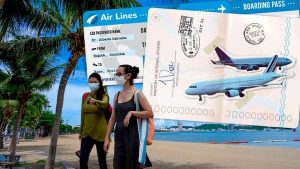Mexico, Mexico, Uncategorized
Tourism in pandemic, know the advantages and disadvantages in Mexico
Our tourism, now pandemic tourism, is one of the pillars of the Mexican economy and its largest service sector; it ranks third in foreign exchange earnings after oil, exports and migrant remittances. And he fights to keep his job.
The outlook for the tourism sector remains highly uncertain. The coronavirus (COVID-19) pandemic continues to hit hard, and international tourism is forecast to decline by about 80% by 2020.
Domestic tourism is helping to soften the economic blow, at least partially, governments and businessmen have taken impressive immediate steps to activate the sector, while protecting jobs, businesses and incentivizing the
hotel search
.

Many countries are also developing measures to build a more resilient tourism economy after COVID-19.
These include preparing plans to support the sustainable recovery of tourism, promote the digital transition and move to a greener tourism system as implemented in
Cancun,
and rethinking tourism for the future.
Disadvantages of pandemic tourism
The disadvantages of the tourism pandemic by COVID-19 in Mexico is that it threatens to increase poverty and inequalities, to the detriment of natural and cultural conservation efforts.
In addition, the pandemic could also slow progress towards achieving many of the Sustainable Development Goals in terms of tourism such as:
- Decent work and economic growth
- Responsible production and consumption
- Underwater life

On the other hand, for women, rural communities, indigenous peoples and many other historically marginalized populations, tourism has been a vehicle for integration and empowerment.
Since mid-July, the government is allowing hotels to operate at only 30% of their capacity, following strict disinfection rules and hygiene protocols.
Juan Garcia, who manages the Puesta del Sol hotel in Valle de Bravo, said they are concerned about asymptomatic guests, but the main concern throughout the city is the lack of visitors.
Tourists from the United States are the main source of foreign tourism in Mexico. But the country’s tourism industry is struggling to attract foreign visitors as it adapts to the “new normal” of the pandemic.
In addition, state governments have supported tourism businesses by temporarily eliminating the occupancy tax generally charged to hotel guests. But many people, such as artisans or boat drivers, also depend on tourists.
Advantages of pandemic tourism

To cushion the blow to tourism, minimize job losses and build the recovery in 2021 and beyond, more needs to be done, and in a more coordinated manner. Among the advantages of pandemic tourism and challenges for governments include:
- Restoring traveler confidence
- Supporting tourism businesses to adapt and survive
- Promotion of domestic tourism and support for the safe return of international tourism
- Provide clear information to travelers and businesses, and limit uncertainty (to the extent possible).
- Evolution of response measures to maintain capacity in the sector and address gaps in support.
- Strengthening cooperation within and between countries
- Building more resilient and sustainable tourism
At the same time, the tourism sector has a high climate and ecological footprint, as it requires high energy and fuel consumption and puts pressure on land systems.
The growth of tourism in recent years has jeopardized the achievement of the Paris Agreement targets. And this pandemic will force local governments to rethink these points.
Greenhouse gas emissions from tourism-related transport are estimated to account for 5% of anthropogenic emissions and could rebound significantly if the sector’s recovery is not in line with climate targets.
There is no doubt that pandemic tourism can become a very hard blow to our country’s economy. It is prudent to take measures while continuing to support the most vulnerable sectors. With
TravelXacapes
you can travel safely and continue to support the economy of all.
Mexico needs you!




